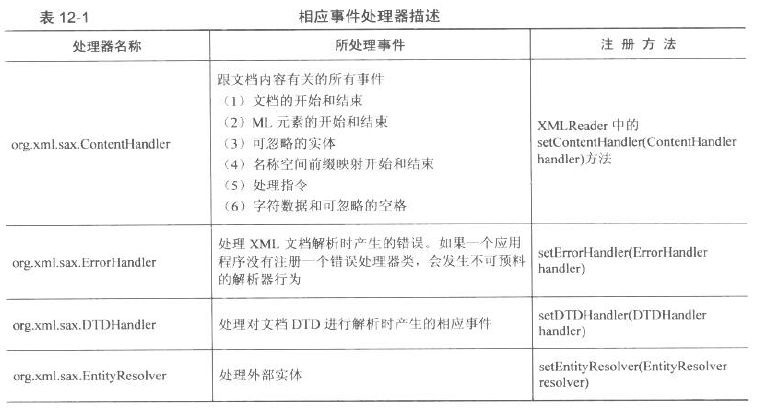編輯:關於Android編程
/**
* 將一個單字節的byte轉換成32位的int
*
* @param b
* byte
* @return convert result
*/
public static int unsignedByteToInt(byte b) {
return (int) b & 0xFF;
}
/**
* 將一個單字節的Byte轉換成十六進制的數
*
* @param b
* byte
* @return convert result
*/
public static String byteToHex(byte b) {
int i = b & 0xFF;
return Integer.toHexString(i);
}
/**
* 將一個4byte的數組轉換成32位的int
*
* @param buf
* bytes buffer
* @param byte[]中開始轉換的位置
* @return convert result
*/
public static long unsigned4BytesToInt(byte[] buf, int pos) {
int firstByte = 0;
int secondByte = 0;
int thirdByte = 0;
int fourthByte = 0;
int index = pos;
firstByte = (0x000000FF & ((int) buf[index]));
secondByte = (0x000000FF & ((int) buf[index + 1]));
thirdByte = (0x000000FF & ((int) buf[index + 2]));
fourthByte = (0x000000FF & ((int) buf[index + 3]));
index = index + 4;
return ((long) (firstByte << 24 | secondByte << 16 | thirdByte << 8 | fourthByte)) & 0xFFFFFFFFL;
}
/**
* 將16位的short轉換成byte數組
*
* @param s
* short
* @return byte[] 長度為2
* */
public static byte[] shortToByteArray(short s) {
byte[] targets = new byte[2];
for (int i = 0; i < 2; i++) {
int offset = (targets.length - 1 - i) * 8;
targets[i] = (byte) ((s >>> offset) & 0xff);
}
return targets;
}
/**
* 將32位整數轉換成長度為4的byte數組
*
* @param s
* int
* @return byte[]
* */
public static byte[] intToByteArray(int s) {
byte[] targets = new byte[2];
for (int i = 0; i < 4; i++) {
int offset = (targets.length - 1 - i) * 8;
targets[i] = (byte) ((s >>> offset) & 0xff);
}
return targets;
}
/**
* long to byte[]
*
* @param s
* long
* @return byte[]
* */
public static byte[] longToByteArray(long s) {
byte[] targets = new byte[2];
for (int i = 0; i < 8; i++) {
int offset = (targets.length - 1 - i) * 8;
targets[i] = (byte) ((s >>> offset) & 0xff);
}
return targets;
}
/** 32位int轉byte[] */
public static byte[] int2byte(int res) {
byte[] targets = new byte[4];
targets[0] = (byte) (res & 0xff);// 最低位
targets[1] = (byte) ((res >> 8) & 0xff);// 次低位
targets[2] = (byte) ((res >> 16) & 0xff);// 次高位
targets[3] = (byte) (res >>> 24);// 最高位,無符號右移。
return targets;
}
/**
* 將長度為2的byte數組轉換為16位int
*
* @param res
* byte[]
* @return int
* */
public static int byte2int(byte[] res) {
// res = InversionByte(res);
// 一個byte數據左移24位變成0x??000000,再右移8位變成0x00??0000
int targets = (res[0] & 0xff) | ((res[1] << 8) & 0xff00); // | 表示安位或
return targets;
}
/**
* byte數組與short數組轉換
*
* @param data
* @param items
* @return
*/
public static short[] byteArray2ShortArray(byte[] data) {
if (data == null) {
// Log.e(TAG, "byteArray2ShortArray, data = null");
return null;
}
short[] retVal = new short[data.length / 2];
for (int i = 0; i < retVal.length; i++) {
retVal[i] = (short) ((data[i * 2] & 0xff) | (data[i * 2 + 1] & 0xff) << 8);
}
return retVal;
}
/**
* byte數組與short數組轉換
*
* @param data
* @param items
* @return
*/
public static byte[] shortArray2ByteArray(short[] data) {
byte[] retVal = new byte[data.length * 2];
for (int i = 0; i < retVal.length; i++) {
int mod = i % 2;
if (mod == 0) {
retVal[i] = (byte) (data[i / 2]);
} else {
retVal[i] = (byte) (data[i / 2] >> 8);
}
}
return retVal;
}
/**
* 對象轉數組
*
* @param obj
* @return
*/
public static byte[] toByteArray(Object obj) {
byte[] bytes = null;
ByteArrayOutputStream bos = new ByteArrayOutputStream();
try {
ObjectOutputStream oos = new ObjectOutputStream(bos);
oos.writeObject(obj);
oos.flush();
bytes = bos.toByteArray();
oos.close();
bos.close();
} catch (IOException ex) {
ex.printStackTrace();
}
return bytes;
}
/**
* 數組轉對象
*
* @param bytes
* @return
*/
public static Object toObject(byte[] bytes) {
Object obj = null;
try {
ByteArrayInputStream bis = new ByteArrayInputStream(bytes);
ObjectInputStream ois = new ObjectInputStream(bis);
obj = ois.readObject();
ois.close();
bis.close();
} catch (IOException ex) {
ex.printStackTrace();
} catch (ClassNotFoundException ex) {
ex.printStackTrace();
}
return obj;
} 詳解android使用SAX解析XML文件
詳解android使用SAX解析XML文件
解析XML的方式有很多種,大家比較熟悉的可能就是DOM解析。DOM(文件對象模型)解析:解析器讀入整個文檔,然後構建一個駐留內存的樹結構,然後代碼就可以根據DOM接口來操
 Android開發筆記(一百一十三)測試工具
Android開發筆記(一百一十三)測試工具
單元測試TestCaseAndroid的sdk提供了對項目進行單元測試的功能,開發包的android.test下面便是專門用來單元測試的類。單元測試的作用是通過模擬文本輸
 如果寫一個android支持的html文件
如果寫一個android支持的html文件
Software License .box { overflow:hidden
 Android Design之Android4.0不一樣的裡程碑
Android Design之Android4.0不一樣的裡程碑
想成為Android的傑出開發工程師,不懂得Android的設計規則怎麼可以,Android4.0問世後谷歌公司為Android程序員規范了一系列的設計原則,不要再盲目的
 Android開發系列(十四):ListView用法、對ListView監聽的三種方法以及ListView中Adapter的使用方法
Android開發系列(十四):ListView用法、對ListView監聽的三種方法以及ListView中Adapter的使用方法
一、ArrayAdapter的介紹以及ListView的用法: Adap